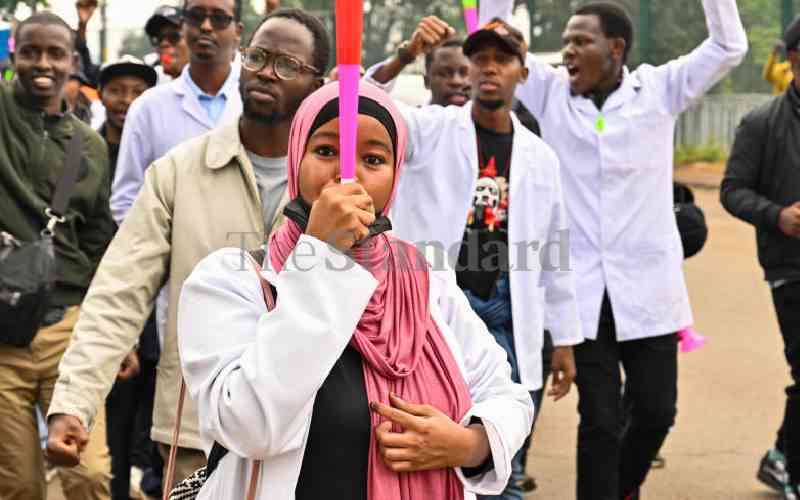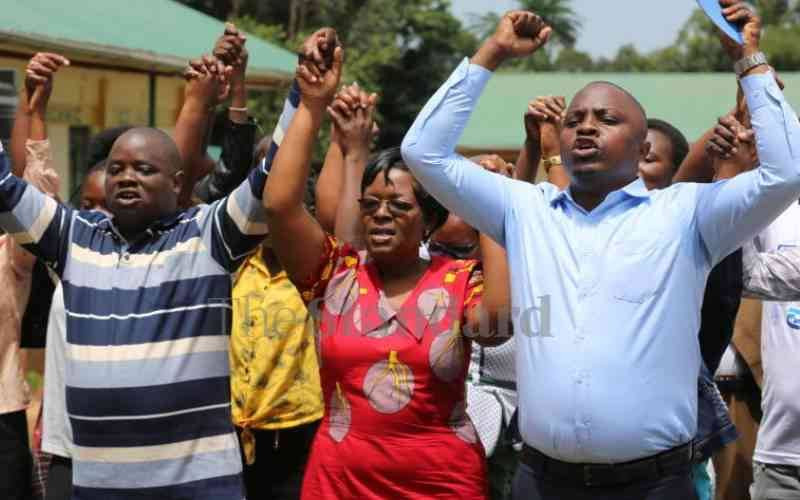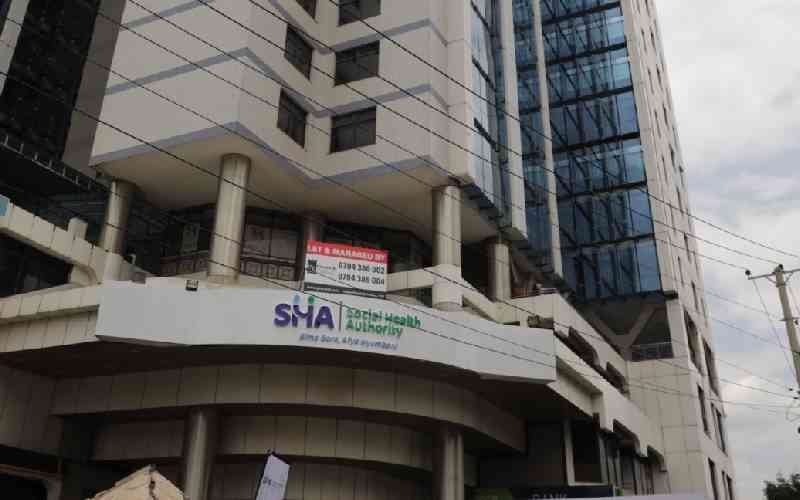
It was tragic. This disease is a monster, remarks Samson Okoth.
Mr Okoth expressed the pain of losing his seven children in five years to malaria.
When they fell ill, Mr Okoth thought it was just a fever, but their condition worsened before losing the battle in the hospital.
The children who were between one and five years old died of acute malaria.
“Death snatched my hopes for the future. Had I known that malaria kills, I would have taken them to hospital earlier,” said the father of 15 with two wives.
The first wife lost three of her 11 children while the second wife lost four of her 10 children.
Had it not been for malaria, Mr Okoth would now be a father of 21.
Since death struck the family, each one now sleeps under an insecticide-treated mosquito net.
“I better spend Sh50 to buy a mosquito net than risk the health of my children,” said Mr Okoth, a farmer from Ripe village in Homa Bay.
He said the enrollment of the malaria vaccine is a silver lining in the fight against malaria.
“My five children below two years have been vaccinated against malaria. I wish the jab was introduced earlier, as it could have saved my children who died.”
Beatrice Nabwire in Mungachi village in Busia is also a victim of the disease which claimed the life of her two-year-old grandson on February 9, 2022, at Busia Hospital.
“After the death of my grandson I learned that malaria kills.”
The 50-year-old attributes the delay in seeking health intervention to financial constraints.
“I did not have money for transport, as the hospital is located far,” Ms Nabwire said. Elsewhere, at the paediatric ward in Busia, malaria-related admissions are overwhelming.
Four-year-old Alvine lies on the hospital bed, unconscious after an emergency admission. He had convulsions, respiratory distress, fever, and is anaemic.
“I am thankful that my grandson is responding well to treatment,” says Eunice Buluma, his grandmother.
Besides Alvine, a number of children at the unit are in a critical state.
According to Naomi Situma, the nursing officer in charge of the paediatric unit, at least six out of 10 children admitted at the ward suffer from malaria.
The children present with high fever, vomiting and respiratory distress.
Ms Situma said they rehydrate vomiting children to reduce the risk of kidney failure due to dehydration.
The nurse attributed malaria complications to the delay in access to healthcare and a poor referral system.
Anaemia also complicates treatment of malaria. It is mostly common among patients with sickle cell. In Teso North, out of 20 admissions, at least five have sickle cell.
For example, out of 10 admissions, at least four require transfusion, and at least one child dies of malaria at the unit every week.
However, during a visit by The Standard at the facility, the hospital was facing a blood shortage.
“With severe malaria, the blood level drops, an issue that is worse in paediatrics.”
Kenya’s malaria indicator survey of 2020 shows Busia leads in the malaria burden, at 39 per cent.
Children under five years and pregnant mothers are the most affected.
Dr Oluoch Onyango said at least two per cent of deaths in the county are caused by malaria.
“The county’s regular monthly statistics indicates that for every 100 patients visiting hospital, at least 40 have malaria,” Dr Onyango said.
Though infections and deaths due to malaria are still high, the coordinator acknowledges gradual decrease in the last 10 years.
In 2010, the mortality rate of malaria stood at 13 per cent, with over 90 per cent of hospital admissions.
The administration of malaria vaccine, rolled out in 2019 has been a boost to the fight against malaria.
As per the health data, a total of 65,414 have been administered.
Uptake of fourth dose of the vaccine is lowest, with only 3,596 doses administered.
The number of first dose administered is 20,879 and 6,995 third doses.
The malaria vaccine is given in four doses at seven, nine, 18 and 24 months of age.
Just like Busia, there is low uptake of the fourth dose of malaria in Homa Bay.
A total of 78,645 doses have been administered since 2019, out of which, 3,038 are fourth doses.
First, second and third doses are 30,895, 25,224 and 19,488 respectively.
“We have rolled out defaulter tracking, an exercise done by community volunteers to trace all children who missed the jab,” county vaccination coordinator Christine Ong’eto said.
Malaria vaccination is being undertaken in Homa Bay town, Ndiwa and Kabondo Kasipul.
Since the jab launch, malaria cases in the county have dropped.
In 2015, the prevalence of malaria was 27 per cent, based on the Kenya Malaria Indicator Survey, which has since dropped to 3.6 per cent.
Other interventions include educating the public on malaria and social behaviour change.
“Injecting children as they come for childhood immunisation has helped in administering the malaria vaccine, reducing infections among infants,” said county malaria coordinator Richard Bonyo.
The new malaria vaccine was approved by the World Health Organisation after a pilot programme in Kenya, Malawi and Ghana.
Before its approval in October last year, the vaccine had been on trial since 1987.
The vaccine reduces severe malaria by 30 per cent even in areas where insecticide nets are widely used and there is access to treatment.
The Ministry of Health, through the National Vaccines and Immunisation Programme, is leading the project in Vihiga, Homa Bay, Kisumu, Migori, Siaya, Busia, Bungoma and Kakamega, counties that have significantly recorded a drop in malaria cases.
Through the Global Fund grant, Amref Health Africa in Kenya together with the Division of National Malaria Programme (DNMP) has been implementing community case management of malaria model in Kisii and Nyamira.
Communities are also trained on the importance of the jab.
Ms Esther Gogo from Ndiwa is among mothers trained by community health volunteers on the importance of the vaccine.
Her 10-month-old baby has received two shots of the jab.
Gogo’s two elder children aged six and 10 have contracted malaria several times which stunted their growth.
“I did not hesitate getting my boy the malaria jab. I do not want any of my children subjected to the suffering.”
 The Standard Group Plc is a multi-media organization with investments in media platforms spanning newspaper print
operations, television, radio broadcasting, digital and online services. The Standard Group is recognized as a
leading multi-media house in Kenya with a key influence in matters of national and international interest.
The Standard Group Plc is a multi-media organization with investments in media platforms spanning newspaper print
operations, television, radio broadcasting, digital and online services. The Standard Group is recognized as a
leading multi-media house in Kenya with a key influence in matters of national and international interest.











